Types of Sensors in Robotics:
`There are mainly 15 types of robot sensors are available to choose from and the characteristics of sensors are used for determining the type of sensor to be used for particular application.
1. Light Sensor:
A Light sensor is used to detect light and create a voltage difference. The two main light sensors generally used in robots are photo-resister and Photovoltaic cells. Other kinds of light sensors like Photo-tubes, Photo-transistors, CCD’s etc are rarely used.
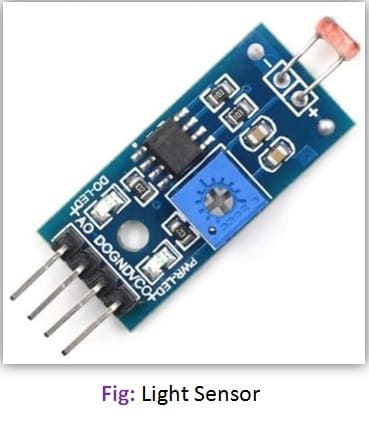
2. Sound Sensor:
As the name suggests, this sensor detects sound and returns a voltage proportional to the sound level. A simple robot can be designed to navigate based on the sound it receives. Imagine a robot which turns right for one clap and turn left for two claps. Complex robots can use the same microphone for speech and voice recognition. Implementing sound sensors are not as easy as light sensors because Sound sensors generate a very small voltage difference which should be amplified to generate measurable voltage change.
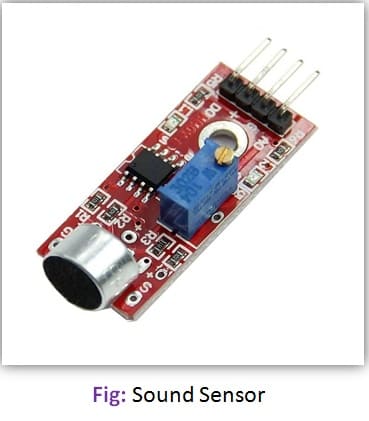
3. Temperature Sensor:
What if your robot has to work in a desert and transmit ambient temperature? Simple solution is to use a temperature sensor. The temperature sensor ICs provide voltage difference for a change in temperature. Few generally used temperature sensor ICs are LM34, LM35, TMP35, TMP36 and TMP37.
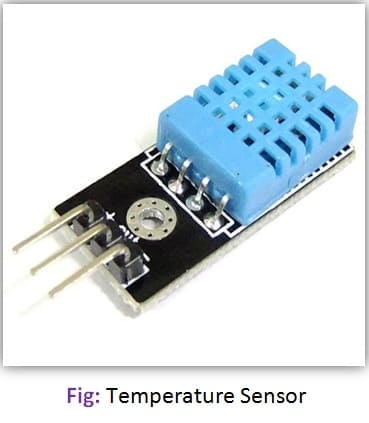
4. Contact Sensor:
Contact sensors are those which require physical contact against other objects to trigger. A push button switch, limit switch or tactile bumper switch are all examples of contact sensors. These sensors are mostly used for obstacle avoidance robots.
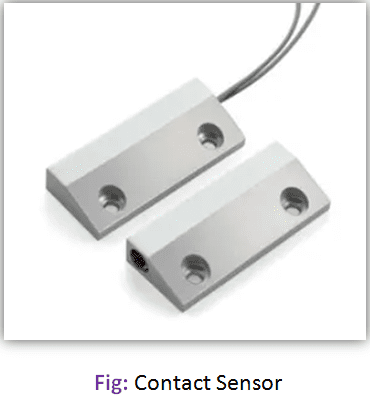
5. Proximity Sensor:
This is a type of sensor which can detect the presence of a nearby object within a given distance without any physical contact. A transmitter transmits an electromagnetic radiation or creates an electrostatic field and receiver receives and analyzes the return signal for interruptions. There are mainly 3 types of proximity sensors which are generally used in robots:
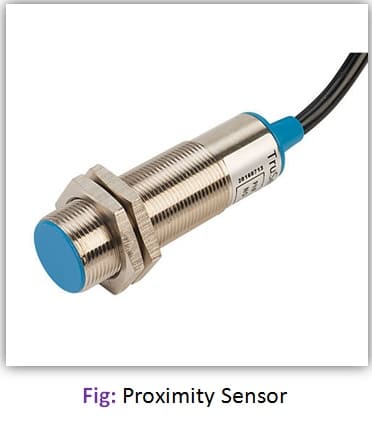
i. IR Transceivers: An IR LED transmits a beam of IR light and if finds an obstacle, the light is simply reflected back which is captured by an IR receiver. Few IR transceivers can also be used for distance measurement.
ii. Ultrasonic Sensor: These sensors generate high frequency sound waves. The received echo suggests an object interruption. Ultrasonic Sensors can also be used for distance measurement.
iii. Photo-resistor: Photo-resistor is a light sensor. But it can still be used as a proximity sensor. When an object come in close proximity to the sensor, the amount of light changes which in turn changes the resistance of the Photo-resistor. This changes can be detected and processed.
6. Distance Sensor:
Most of Proximity sensors can also be used as distance sensors. It is commonly known as Range Sensors. IR and Ultrasonic sensors are best suited for distance measurement.
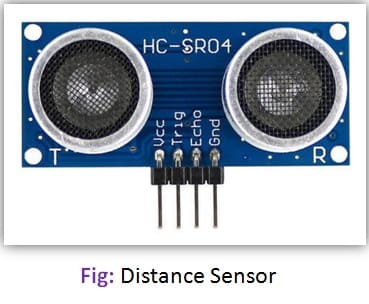
i. Ultrasonic Distance Sensors: This sensor emits an ultrasonic pulse and is captured by a receiver. Since the speed of sound is almost constant in air, which is 344m/s, the time between send and receive is calculated to give the distance between your robot and the obstacle. These sensors are specially useful for underwater robots.
ii. Infrared Distance Sensors: IR circuits are designed on triangulation principle for distance measurement. A transmitter sends a pulse of IR signals which is detected by the receiver if there is an obstacle and based on the angle the signal is received, distance measurement. A simple transmit and receive using a couple of transmitters and receivers will still do the job of distance measurement, but if you require precision, then prefer the triangulation method.
iii. Laser Range Sensors: Laser is light is communicated and the reflected light is captured and analyzed. Distance is measured by calculating the speed of light and time taken for the light to reflect back to the receiver. These sensors are very useful for longer distances.
iv. Encoders: These sensors converts angular position of a shaft or wheel into an analog or digital code. The most popular encoder is an optical encoder which includes a rotational disk, light source and a light detector. The rotational disk has a transparent and opaque pattern painted or printed over it.
v. Stereo Camera: Two cameras placed adjacent to each other can provide depth information using its stereo vision. Processing the data received from a camera is difficult for a robot with minimal processing power and memory. If opted for they make a valuable addition to your robot.
7. Pressure Sensor:
As the name suggest, pressure sensor measures the pressure. Tactile pressure are useful in robotics as they are sensitive to touch, force and pressure. If you design a robot hand and need to measure the amount of grip and pressure required to hold an object, then this is what you would want to use.
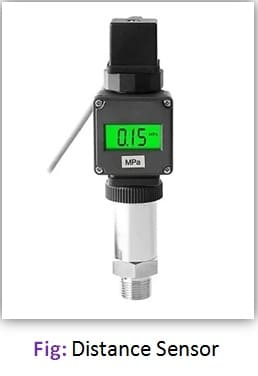
8. Tilt Sensor:
Tilt sensors measure tilt of an object. In a typical analog tilt sensor, a small amount of mercury is suspended in a glass bulb. When mercury flows towards one end, it closes a switch which suggest a tilt.
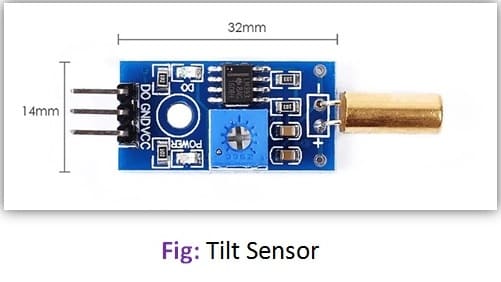
9. Navigation/Positioning Sensor:
The name say it all. Navigation or Positioning sensors are used to approximate the position of a robot, some for indoor positioning and few others for outdoor positioning.
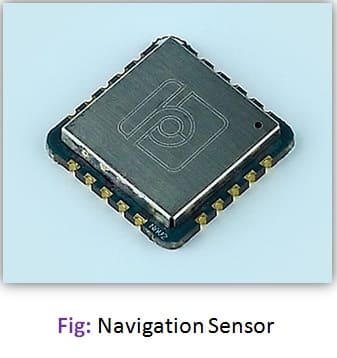
i. GPS (Global Positioning System): The most commonly used positioning sensor is a Global Positioning System (GPS). Satellites orbiting our earth transmit signal and a receiver on a robot acquires these signal and processes it. The processed information can be used to determine the approximate position and velocity of a robot. These GPS systems are extremely helpful for outdoor robots, but fail indoors. They are also bit expensive at the moment and if their prices fall, very soon you would see most robots with a GPS module attached.
ii. Digital Magnetic Compass: Similar to handled magnetic compass, Digital Magnetic compass provides directional measurements using the earth’s magnetic field which guides your robot in the right direction to reach its destination. These sensors are cheap compared to GPS modules, but a compass works best along with a GPS module if you require both positional feedback and navigation. Philips KMZ51 is sensitive enough to detect earth’s magnetic field.
iii. Localization: It refers to the task of automatically determining the location of a robot in complex environment. Localization is based on external elements called landmarks which can be either artificially placed landmarks or natural landmark. In the first approach, artificial landmarks or beacons are placed around the robot and a robot sensor captures these signal to determine its exact location.
Natural landmarks can be doors, windows, walls, etc which are sensed by a robots sensor/vision system. Localization can be achieved using beacons which generate Wi-Fi, Bluetooth, Ultrasound, Infrared, Radio Transmissions, Visible Light or any similar signal.
10. Acceleration Sensor:
An acceleration is a device which measures acceleration an d tilt. There are two kind of forces which can effect an accelerometer:
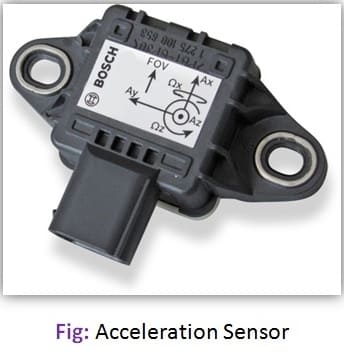
i. Static Force: Static force is the frictional force between any two objects.
ii. Dynamic Force: Dynamic force is the amount of acceleration required to move an object.
11. Gyro Sensor:
A gyroscopic or gyro sensor is a device which measures and helps maintain orientation using the principle of angular momentum. In other words, a gyro sensor is used to measure the rate of rotation around a particular axis. It is especially useful when you want your robot to not depend on earth’s gravity for maintaining orientation.
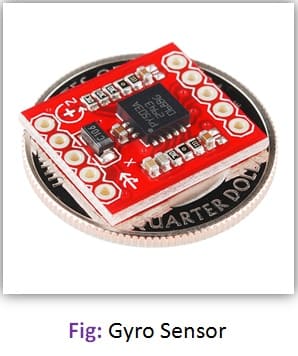
12. IMU:
Inertial Measurement Unit (IMU) combine properties of two or more sensors such as Accelerometer, Gyro, Magnetometer, etc to measure orientation, velocity and gravitational forces. In other words, IMUs are capable of providing feedback by detecting changes in an object’s orientation, velocity and gravitational forces. Few IMUs go a step further and combine a GPS device providing positional feedback.
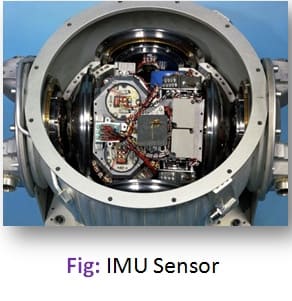
13. Voltage Sensor:
Voltage sensors typically convert lower voltage to higher voltages or vice versa. For Example, a general Operational-Amplifier (Op-Amp) which accepts a low voltage, amplifies it and generates a higher voltage output. Few voltage sensors are used to find the potential difference between two ends (Voltage Comparator). Even a simple LED can act as a voltage sensor which can detect a voltage difference and light up.
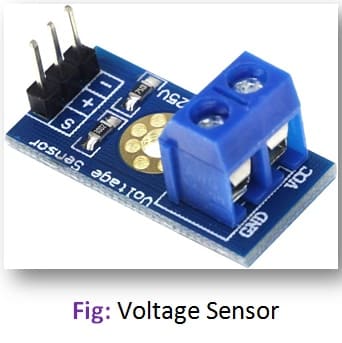
14. Current Sensor:
Current sensors are electronic circuits which monitor the current flow in a circuit and output either a proportional voltage or a current. Most current sensors output an analog voltage between 0V to 5V which can’t be processed further using a micro-controller.
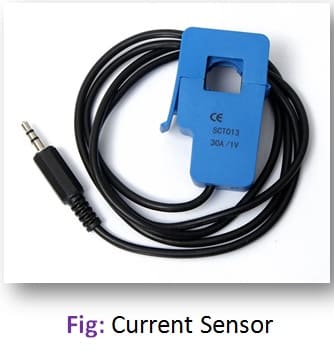
15. Other Sensors:
There are are hundreds of sensors made today to sense virtually anything you can think of. It is almost impossible to list all available sensors. There are many other sensors used for specific applications.
i. Touch Sensor: The touch sensor can be included in the proximity sensors category and are designed to sense objects at a small distance with or without direct contact. This sensor is designed to detect the changes in the capacitance between the on-board electrodes and the object making contact.
ii. Color Sensor: Different colors are reflected with different intensity. For example, the orange color reflects red light in an amount greater than the green color and this is the color sensor. This simple sensor is in the same range with light sensor, but with a few extra features that can be useful for applications where the robot has to detect the presence of an object with a certain color or to detect the types of objects or the surfaces.
iii. Sonar Sensor: The sonar sensor can be used primarily in navigation for object detection, even for small objects. It is used in projects with a big budget because this type of sensor is very expensive. This sensor has high performance on the ground and in water where it can be used for submersed robotics projects.
iv. Image Sensor: Most popular combination for detection and tracking an object or detecting a human face is a webcam and Open-CV vision software. This combination may be the best in detection and tracking applications. But it is necessary to have advanced programming skills and a mini computer like a Raspberry Pi. Using an image sensor is a wide range of applications. It can be built and some of these are listed below:
- Face detection and tracking
- Tracking and detecting objects in colors
- Detect specific shapes in images
- Detect corners of triangles from an image
- It can acquires and prioritizes targets
- Detect the position of an object on 2D surfaces